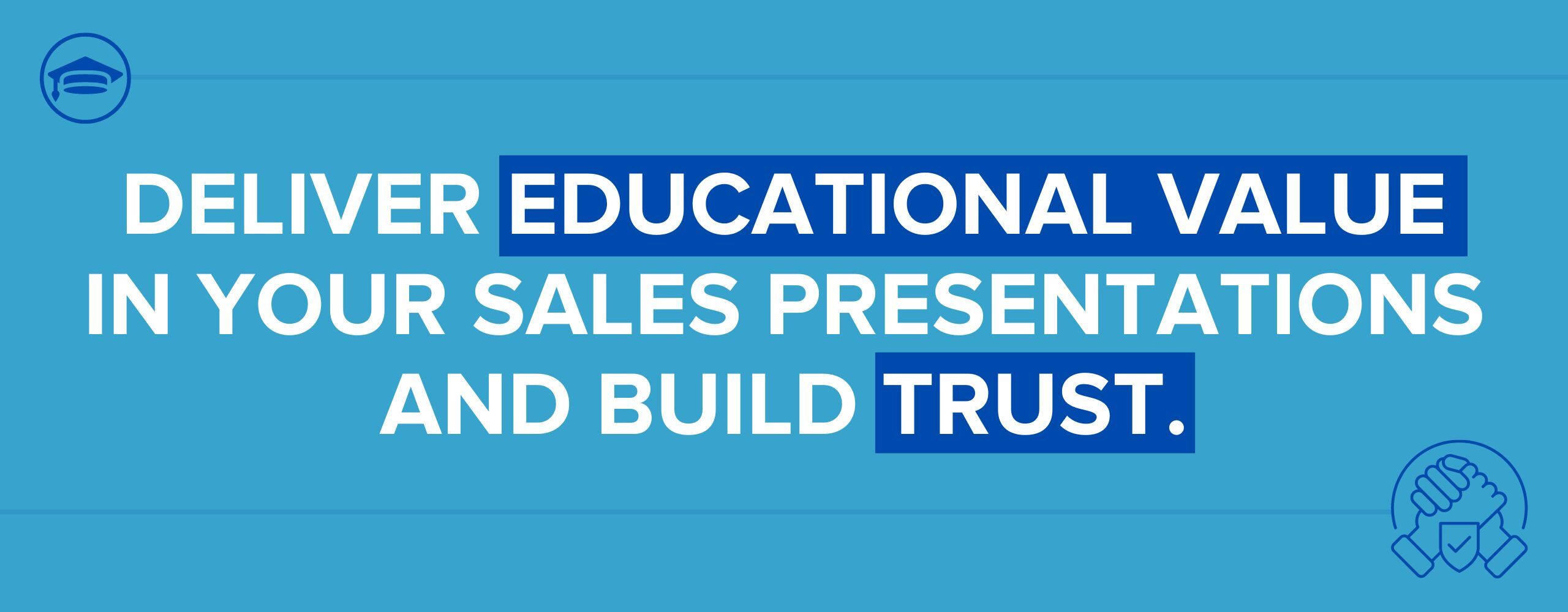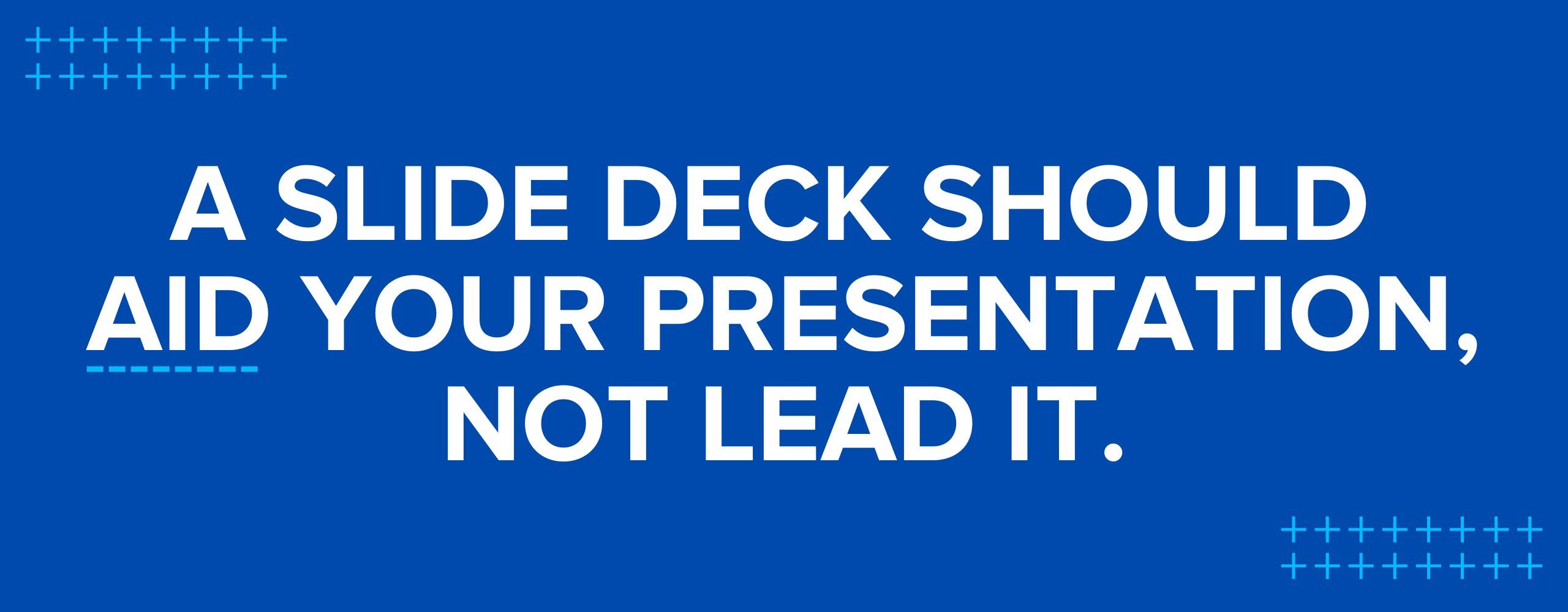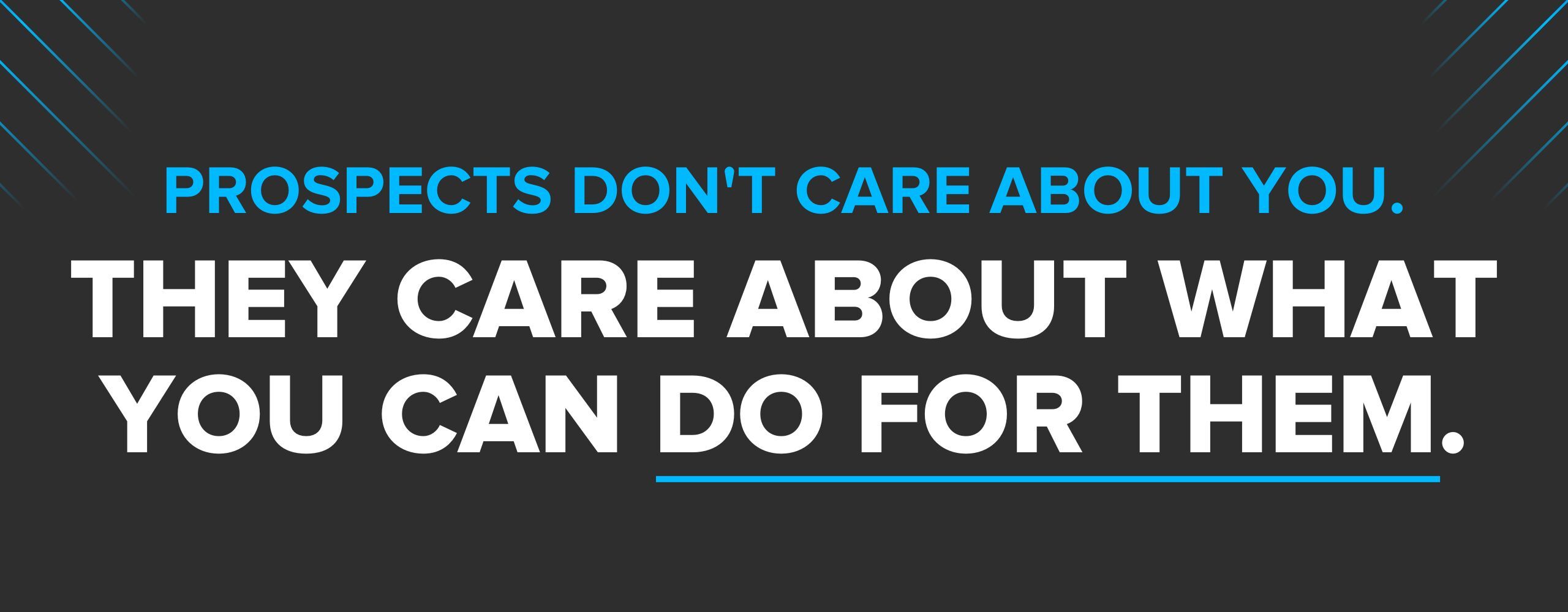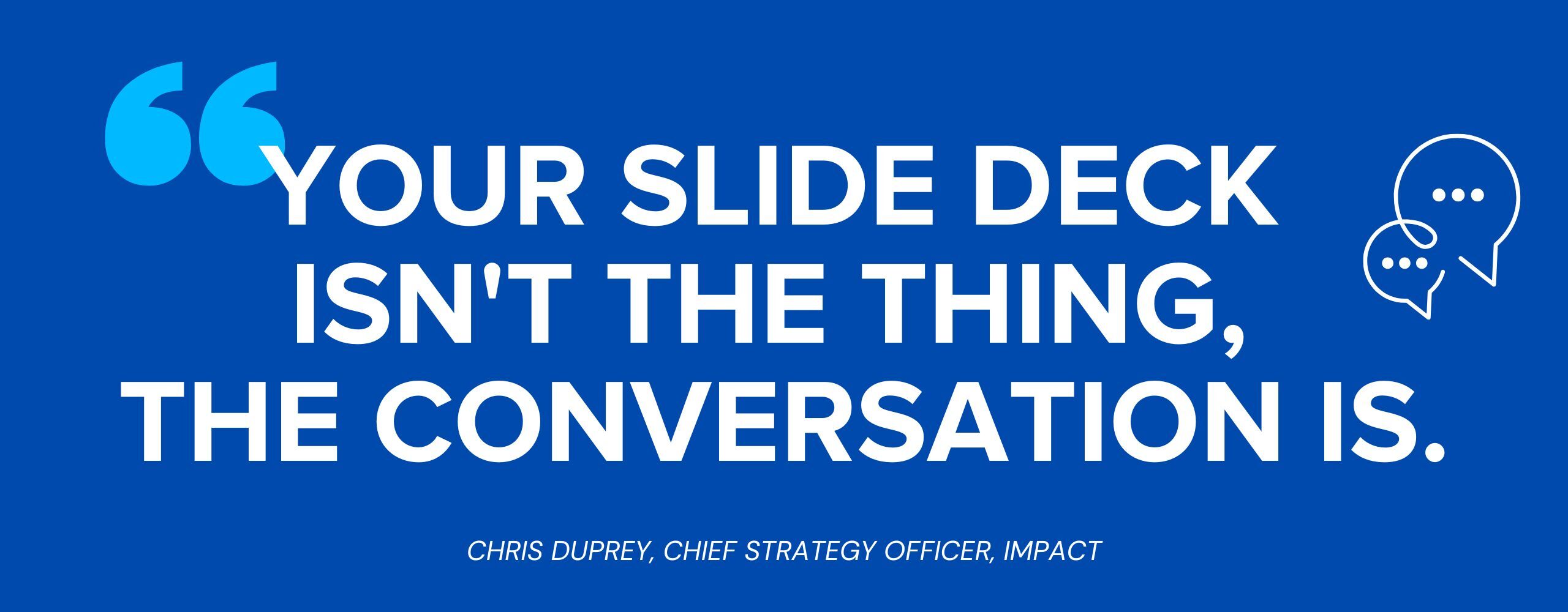Subscribe now and get the latest podcast releases delivered straight to your inbox.
4 Smart Ways to Fix Your Sales Presentations

Jan 25, 2024

I think we can all agree there’s little worse than a hard sale pitch.
As a buyer, you want information, not pressure. When a salesperson comes in with an aggressive sales pitch, you feel cornered and uncomfortable.
And you're not alone.
Most modern buyers would prefer to never interact with a salesperson at all. They'd prefer to make purchases remotely on their own timeline.
But, you're thinking, my business is trying to make money. How do we sell without selling?
Bear with me, I will explain.
Education sells, not swindling
Your prospects work hard for their money, just like you, and they don’t want to waste it.
When it comes to spending it, they want to be educated by experts who will help them spend wisely, not someone simply out to sign any deal to meet their monthly quota.

They want to be informed and empowered to make the right decision for themselves so they're not stuck with buyer’s remorse.
Knowing this, the most successful salespeople are those who:
- Listen more than they talk
- Offer value and information, not just a sales pitch
So, share information, ask great questions, and offer advice. In other words, treat your customers how you'd want to be treated if you were the one buying.
So how do you do this?
In this article, we will talk through four quick ways you can fix your sales presentation to deliver more value, build trust, and close more of the right prospects.
Note: This article will focus specifically on the substance of your presentation, not the technology or processes around it. If you need help in that area, check out: 12 Best Practices for Better Virtual Sales Calls.
1. Prepare for your presentations
While all your sales calls may follow a similar format, every presentation you give should inevitably be a little different. This is because every prospect is different. You want to cater the information you share to their needs and situation.
With this in mind, take the time to rehearse or role-play the conversation before the meeting.
Ask a teammate to listen in, or better yet, play the role of your prospect, asking questions and poking holes.
This will help you better anticipate and prepare for objections — and also help you smooth out any bumps in your presentation. Remember to work through transitions, such as sharing your screen or awkward “can you hear the sound?” moments.
Practicing with a teammate will help you determine where you may benefit from a slide or visual aid and even if you can do without.
That said, however…
2. Don’t obsess over slides
A slide deck should aid your presentation, not lead it.
Prospects didn’t block out time to mindlessly watch you rattle off like a YouTube video they can’t pause or rewind. They came to engage and work through possibilities personally.
So, don’t use slides as a crutch.

Only use them when absolutely needed to illustrate something you are talking about or to drive home key information. This may include things you want to emphasize or want prospects to remember, such as:
- social proof (e.g., testimonials and case studies)
- statistics
- contact information.
This restraint is especially important when the sales presentation is virtual and screen sharing may often mean faces are hidden.
In general, fewer slides with less text is the way to go.
3. Don’t be secretive about your slides
While we're on that note, think about this: If you do find yourself using slides (or any visuals for that matter) don't keep them a secret. Share them with your prospects before and after the call.
Allow them to get familiar with the content beforehand so they can come prepared with questions.
This way, you can use your meeting time to go deeper into the most important information and have a more fruitful conversation.
In addition to the call recording, sharing the slide deck in your post-meeting follow-up email gives prospects the ability to revisit the information you shared with their team or their family.
If you want to go the extra mile, you can even consider doing a quick video walkthrough of the slide deck itself so prospects don’t need to review the entire call recording when time is of the essence.
4. Make the buyer the hero
Remember, your sales presentation is not about you — it’s about your prospect's needs.
Prospects don’t care about you. They care about what you can do for them.
You need to be cognizant of this as you prepare your sales presentation. Make your potential customer the main character of your presentation, or as the StoryBrand framework says, “the hero.”
Talk about their pain points, problems, and interests. Put any information into the context of what they’re experiencing and what it means for them. Sell the outcomes, not your products.

IMPACT’s Chief Strategy Officer Chris Duprey recommends using the first few minutes of your presentation (or slide deck) to dive into the problems a prospect is facing and how they manifest in that person's day-to-day.
This will set the stage for what needs to be accomplished in the call — finding a solution to these problems — and show that you truly understand where they’re coming from.
Understanding fosters trust, and as Marcus Sheridan says, trust is ultimately what any prospect needs to feel comfortable buying from you.
The greatest presentation results in a conversation
When it comes to your sales presentation, Chris Duprey says “Your slide deck isn’t the thing, the conversation is.”
In other words, your sales presentation isn’t nearly as important as the conversation that spawns from it. So, listen to what your prospects have to say. Ask and answer questions as the call progresses.

Maintaining a dialogue allows you to truly learn what your prospect cares about so that you can deliver the most value and ultimately build a trusting relationship.
If a prospect doesn’t decide to move forward with you after an honest, educational sales presentation, they likely weren’t the right fit for you. Even so, they'll leave with a favorable opinion of you and your company.
But the prospects who do move forward will be well-informed, have realistic expectations, and be enthusiastic about getting started.


Order Your Copy of Marcus Sheridan's New Book — Endless Customers!